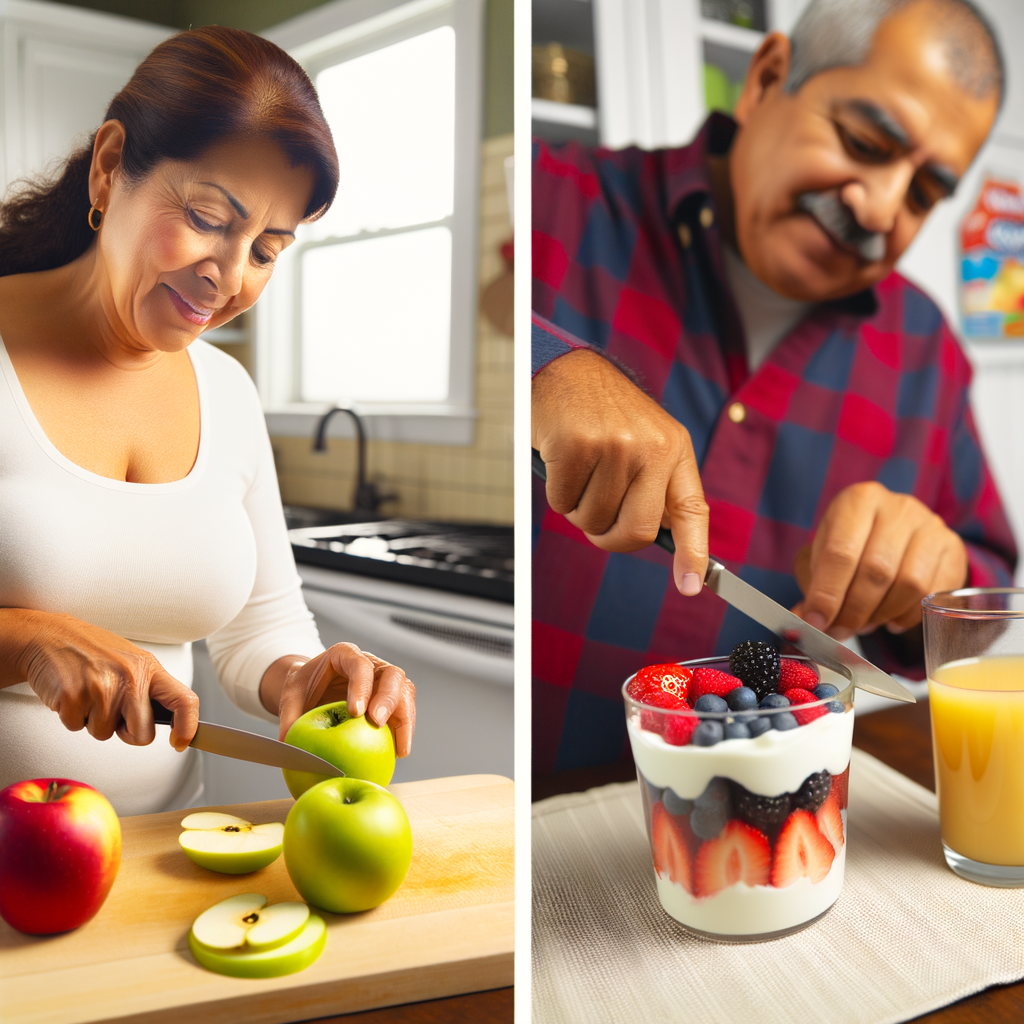Nature's Sweet Secret: Why Traditional Fruit Consumption Makes Sense for Diabetes Management
In our modern world of highly processed foods and conflicting nutritional advice, there's something refreshingly simple about examining how our ancestors approached diet. Traditional cultures worldwide incorporated fruits into their diets in ways that can provide valuable insights for those managing diabetes today. Let's explore the wisdom behind traditional fruit consumption and what it means for blood sugar management.
The Fruit Paradox in Diabetes Management
Many people with diabetes receive confusing messages about fruit. On one hand, fruits are celebrated as nutritional powerhouses packed with vitamins, minerals, and antioxidants. On the other, their natural sugar content raises concerns about potential blood glucose spikes.
This contradiction leaves many wondering: is fruit friend or foe for those with diabetes?

Traditional Wisdom vs. Modern Consumption
How Our Ancestors Ate Fruit
Traditional diets around the world incorporated fruits in ways fundamentally different from our modern approach:
- Seasonal consumption: Fruits were eaten when naturally available, creating built-in periods of consumption and non-consumption
- Whole fruit consumption: Traditional cultures ate fruits in their complete form, including fibrous parts often discarded today
- Limited variety: People consumed local varieties available in their region, not the global array found in today's supermarkets
- Moderate portions: Fruits were treated as special foods, not everyday staples consumed in large quantities
- Natural ripening: Fruits were harvested at natural ripeness, not picked early and artificially ripened

The Modern Fruit Landscape
Today's fruit consumption differs dramatically:
- Year-round availability of nearly all varieties
- Selectively bred for higher sugar content and lower fiber
- Often consumed as juices, removing beneficial fiber
- Larger portion sizes than traditionally consumed
- Sometimes picked unripe and treated to induce artificial ripening
The Glycemic Impact: Traditional vs. Modern Approaches
When we examine the glycemic impact of fruit consumption through a traditional lens, several important principles emerge:
The Fiber Factor
Traditional fruit consumption included the whole fruit, maximizing fiber intake. Fiber slows digestion and helps moderate blood glucose responses. Modern practices of juicing or removing fibrous parts eliminates this natural blood sugar buffer.
For example, traditional cultures might eat berries whole (seeds and all) or consume apples with their peels rather than drinking apple juice, which contains concentrated sugars without the balancing fiber.

Seasonal Rhythms
The seasonal nature of traditional fruit consumption meant the body experienced natural cycles of higher and lower carbohydrate intake throughout the year. In many traditional societies, sweet fruits were available for only a few weeks or months annually, providing natural periods of lower carbohydrate consumption.
This natural cycling may have helped maintain insulin sensitivity in a way that year-round high sugar consumption does not.
Portion Awareness
Traditional cultures typically consumed fruits in modest quantities, often as accompaniments rather than main dishes. The abundance and constant availability of fruits in modern diets can lead to overconsumption, which can impact blood glucose levels more significantly.
Practical Applications for Diabetes Management
How can we apply this traditional wisdom to modern diabetes management?
Choose Whole Fruits
Prioritize whole fruits over juices or processed fruit products. The fiber in whole fruits helps slow sugar absorption and provides greater satiety, helping with portion control.
Consider Glycemic Impact
Different fruits have varying effects on blood glucose. Berries, cherries, apples, and pears typically have lower glycemic impacts than tropical fruits like mangoes or pineapples. Traditional diets naturally emphasized locally available varieties, which often meant lower-glycemic options in many regions.
Pair Strategically
Traditional meals rarely featured fruit in isolation. Consider pairing fruit with sources of protein or healthy fats to further moderate blood glucose response—like berries with plain yogurt or an apple with a small handful of nuts.
Respect Seasonality
While not always practical in modern life, incorporating some seasonal awareness into fruit choices can help create more natural consumption patterns. This might mean enjoying summer berries at their peak rather than purchasing imported off-season options.
Monitor Individual Responses
Perhaps most importantly, pay attention to your body's unique response. Blood glucose monitoring can help identify which fruits, in what portions, work best for your individual metabolism.

The Bigger Picture: Beyond Blood Sugar
Traditional approaches to fruit consumption offer benefits beyond glycemic management. The phytonutrients, vitamins, and minerals in fruits play important roles in overall health, potentially reducing inflammation and supporting systems that protect against diabetes complications.
Research suggests that anthocyanins in berries may improve insulin sensitivity, while the antioxidants in many fruits help combat oxidative stress associated with diabetes. These benefits remind us that blood glucose impact is just one consideration in the complex relationship between fruit consumption and diabetes health.
Finding Balance
The wisdom of traditional diets doesn't suggest eliminating fruit but rather consuming it mindfully and in ways that honor our biological needs. By incorporating whole fruits in moderate amounts as part of balanced meals, people with diabetes can enjoy the nutritional benefits of fruit while managing blood glucose effectively.
This balance—enjoying nature's sweet offerings without overindulgence—represents the true wisdom of traditional approaches to fruit consumption, offering valuable lessons for diabetes management in our modern world.

References
Muraki I, Imamura F, Manson JE, et al. Fruit consumption and risk of type 2 diabetes: results from three prospective longitudinal cohort studies. BMJ. 2013;347:f5001. doi:10.1136/bmj.f5001
Guasch-Ferré M, Merino J, Sun Q, Fitó M, Salas-Salvadó J. Dietary Polyphenols, Mediterranean Diet, Prediabetes, and Type 2 Diabetes: A Narrative Review of the Evidence. Oxidative Medicine and Cellular Longevity. 2017;2017:6723931. doi:10.1155/2017/6723931






